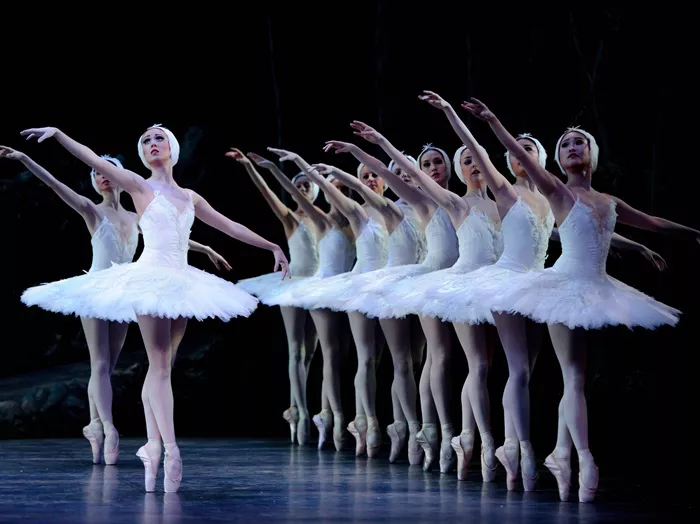Classical music and ballet have a deep, intertwined history. They complement each other, creating a harmonious and expressive art form. This article explores why classical music is integral to ballet. We will delve into historical roots, artistic synergy, and the lasting impact on audiences.
I. Historical Roots of Ballet and Classical Music
Origins of Ballet
Ballet began in the Italian Renaissance courts of the 15th century. It was a form of court entertainment. Early ballets were dramatic spectacles. They combined dance, music, and poetry. In the 16th century, Catherine de Medici, an Italian noblewoman, married King Henry II of France. She brought ballet to the French court, where it flourished.
Evolution of Classical Music
Classical music also has its roots in the Renaissance. Composers like Josquin des Prez and Giovanni Pierluigi da Palestrina paved the way for the Baroque period. During this time, composers like Johann Sebastian Bach and George Frideric Handel created complex, ornate music. The Classical period followed, with composers like Wolfgang Amadeus Mozart and Ludwig van Beethoven emphasizing clarity and form. The Romantic era brought emotional depth, with composers like Pyotr Ilyich Tchaikovsky and Johannes Brahms.
Ballet and Classical Music Merge
Ballet and classical music formally merged in the 17th century. The ballet de cour in France included instrumental music, dance, and lavish costumes. King Louis XIV, a passionate dancer, founded the Académie Royale de Danse in 1661. This institution professionalized ballet. Jean-Baptiste Lully, the king’s composer, created music specifically for ballet, setting a precedent for future collaborations.
II. Artistic Synergy Between Ballet and Classical Music
Expression of Emotion
Classical music’s complexity and emotional depth make it perfect for ballet. Music sets the tone and atmosphere. It conveys emotions that dancers express physically. Tchaikovsky’s ballets, like “Swan Lake” and “The Nutcracker,” are prime examples. His music captures the essence of the story, enhancing the dancers’ performances.
Structure and Rhythm
Classical music’s structured nature aligns with ballet’s disciplined form. Both art forms value precision and timing. The music provides a rhythmic foundation for the choreography. This synchronization is vital for complex dance sequences. For instance, Igor Stravinsky’s “The Firebird” challenges dancers with its intricate rhythms, but also guides them with its structure.
Inspiration and Innovation
Classical music inspires choreographers to create innovative works. George Balanchine, a pioneering choreographer, often used classical music. He believed music and dance should be inseparable. His ballets, set to the works of composers like Stravinsky and Tchaikovsky, are masterpieces of collaboration.
III. Iconic Ballets and Their Classical Music Scores
“Swan Lake” by Pyotr Ilyich Tchaikovsky
“Swan Lake” is one of the most famous ballets. Tchaikovsky composed its score in 1875. The music is dramatic and emotive, perfectly matching the story of love and betrayal. The “Dance of the Little Swans” is a well-known piece, requiring precise, synchronized movements from the dancers.
“The Nutcracker” by Pyotr Ilyich Tchaikovsky
Another iconic ballet by Tchaikovsky is “The Nutcracker.” Its score is a Christmas staple. The “Dance of the Sugar Plum Fairy” and the “Waltz of the Flowers” are highlights. The music’s charm and whimsy are brought to life through the choreography.
“Romeo and Juliet” by Sergei Prokofiev
Prokofiev’s “Romeo and Juliet” is a powerful adaptation of Shakespeare’s play. The music is intense and lyrical, capturing the tragic romance. The “Dance of the Knights” is a standout piece, known for its bold, commanding melody.
IV. The Role of the Conductor and Orchestra
Synchronization and Interpretation
The conductor plays a crucial role in ballet performances. They ensure the orchestra and dancers are in sync. This requires precise timing and a deep understanding of the choreography. The conductor interprets the music, bringing out nuances that enhance the dance.
Live Performance Dynamics
Live orchestras add a dynamic element to ballet. The energy of a live performance is palpable. Musicians respond to the dancers, creating a symbiotic relationship. This live interaction elevates the overall experience for the audience.
V. Impact on Audiences
Emotional Connection
The combination of classical music and ballet creates a profound emotional connection. Music evokes emotions that dance amplifies. This synergy allows audiences to experience the story on multiple levels.
Cultural Significance
Classical music and ballet are cultural treasures. They represent the pinnacle of artistic achievement. Attending a ballet is often seen as a sophisticated experience. It offers a glimpse into history and tradition, while also showcasing contemporary creativity.
VI. Modern Interpretations and Fusion
Contemporary Ballet
Modern choreographers continue to draw from classical music. However, they also experiment with new styles. Contemporary ballet often blends classical techniques with modern movements. This creates fresh, innovative performances that still honor tradition.
Fusion with Other Genres
Some choreographers incorporate other music genres into ballet. Jazz, pop, and electronic music have all been used. This fusion broadens ballet’s appeal and introduces it to new audiences. However, classical music remains a foundational element.
See Also: Exploring Semi-Classical Music: A Fusion of Tradition and Innovation
VII. Conclusion
Classical music and ballet are inseparable. Their historical roots, artistic synergy, and emotional impact make them a perfect match. Iconic ballets like “Swan Lake” and “The Nutcracker” showcase the power of this collaboration. Conductors and live orchestras play a vital role, adding depth to performances. The combination of music and dance creates an emotional connection with audiences, ensuring the continued relevance of ballet. Modern interpretations and fusion with other genres keep the art form vibrant and accessible. Classical music remains at the heart of ballet, guiding and inspiring it through the ages.

